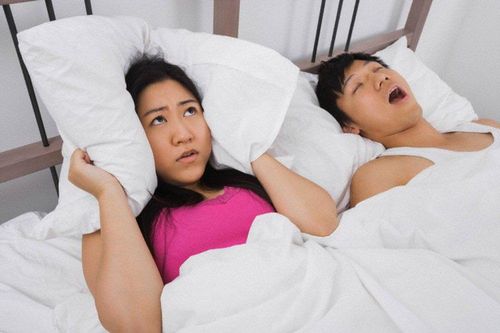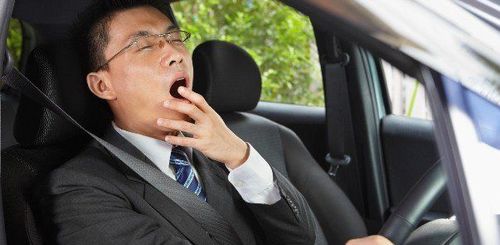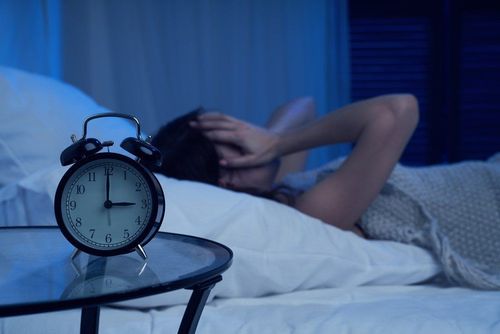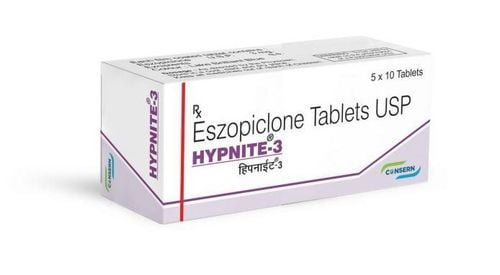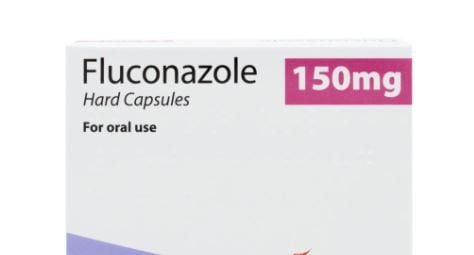This is an automatically translated article.
Posted by Master, Doctor Nguyen Ngoc Bach - Respiratory Specialist - Respiratory Unit - Allergy and Clinical Immunology - Vinmec Times City International Hospital
The phenomenon of falling asleep while driving is not uncommon and is one of the main causes leading to unfortunate traffic accidents. So what solutions can help drivers avoid drowsiness in traffic?
1. How dangerous is falling asleep while driving?
Drowsiness while driving accounts for about one in six major causes of accidents and one in eight accidents that result in driver or passenger hospitalisation. This high percentage is consistent with the observation that drowsy driving crashes occur at high speeds, where avoidance maneuvers such as braking or turning can be minimized. accident.
The prevention and prevention of drowsiness while driving will greatly reduce the number of accidents and their serious consequences. Drivers are encouraged to report their health status and the frequency of drowsiness in traffic, because it is very important to identify subjects at risk of drowsiness. Precautionary measures including: health education, warnings about the use of sedatives, screening for sleep apnea syndrome... should be extended beyond drivers whose drowsiness has already occurred. Reported, specific target groups that should receive educational interventions include: young drivers, commercial drivers, people with sleep disturbances, people taking sedatives, working night or rotational shifts and people who don't get enough sleep, insomnia and driving history with frequent sleepiness
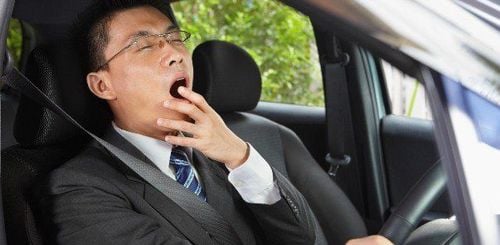
Ngủ gật khi lái xe tiềm ẩn nhiều nguy hiểm đến tính mạng như tai nạn giao thông
The detection of subjects at risk may require referral to medical staff for consultation and investigations. For example, do a sleep survey to diagnose sleep apnea and come up with policies and solutions to completely deal with drowsiness or minimize the consequences of drowsiness while driving.
To detect such objects requires a lot of resources and support from different resources in society such as: family members, colleagues, medical staff with periodic health checks, labor managers, employees. Traffic policy officer... Exchange for information, use anthropometry, evaluate daily vehicle driving work. There are many ways to detect common risk factors for drowsy driving. Some factors that put a person at risk include:
Sleep disorders (eg, obstructive sleep apnea [OSA], narcolepsy)
Existing medical conditions that may affect affect sleep duration and quality (eg, any cardiopulmonary arrest, pain syndrome, mental stress)
Use of sedative medications (eg, benzodiazepines, nonbenzodiazepine hypnotics, opioids) ) and alcohol
● Driving conditions (e.g., long distances, late nights, driving alone)
Factors that affect circadian rhythms (e.g. night shift or overtime)
Factors Lifestyle factors (eg, multi-tasking, babysitting)
● Not getting enough sleep
● Youth
● History of falling asleep in traffic or at work
During Of the above problems, sleep apnea syndrome is common, but often overlooked. Only about half of patients with this syndrome complain of excessive daytime sleepiness; Common symptoms of these subjects include loud snoring, waking up choking or gasping, living with sleep apnea, nocturia and morning headaches. Subjects with suggestive of sleep apnea include obesity, large neck circumference, and uncontrolled hypertension. These signs are easily collected by medical staff at regular check-ups or as a warning factor for family members, colleagues, and employers, so that advice can be given to those undergoing screening. accidents and consequences are now avoided.
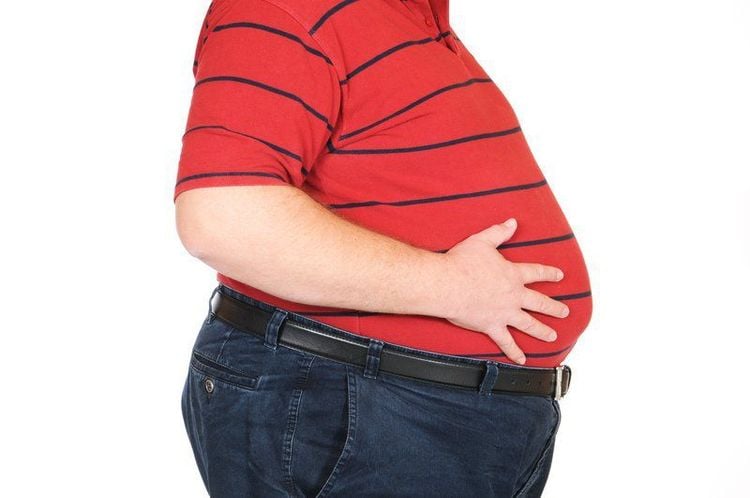
Những người béo phì tăng nguy cơ xuất hiện dấu hiệu ngừng thở khi ngủ
Key issues of preventing the consequences of a traffic accident due to drowsiness include education about the symptoms of drowsiness while driving, avoiding and planning ahead, using a nap in advance and caffeine during avoidable driving situations and treat any underlying causes of excessive sleepiness, like obstructive sleep apnea (OSA). Patients should also be pointed out that self-assessment of somnolence is difficult to be accurate, and that if their own sleep status is uncertain, they may be in danger even if they do not feel drowsy. Technology application measures can also play an increasingly important role in recognizing and preventing drowsy driving more objectively besides self-assessment.
2. Some solutions to prevent falling asleep while in traffic
2.1. Driver Education
Drivers should be educated about the symptoms and signs of drowsiness while driving and about effective countermeasures. Symptoms of drowsy driving include difficulty concentrating, frequent blinking, heavy eyelids, daydreaming, disconnected wandering thoughts, difficulty recalling a distance traveled (sometimes referred to as '" automatic behavior"), forgetting directions and street signs encountered, yawning frequently, rubbing eyes, difficulty holding head up, and feeling restless and irritable. It should be noted, however, that self-assessments of sleepiness and performance are unreliable and some drivers are often unaware of their own levels of sleepiness.
Aware of the risk of falling asleep, drivers should be advised to use other modes of transportation, such as shift driving, public transport, taxis or on foot. Importantly, drivers should plan ahead to avoid driving at times of day when they are likely to doze off, such as mid-afternoon, late at night, or after a period of sleep deprivation. It is advisable to drive short distances and use alternative modes of transportation.
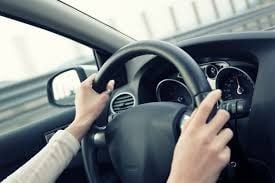
Người lái xe khi có dấu hiệu ngủ gật cần sử dụng các phương thức vận chuyển khác
2.2. Advice for people who are using sedatives
Drivers using sedatives should be warned about the risk of drowsy driving accidents and advised against drinking alcohol in combination with these drugs. Individuals should be vigilant for symptoms that may indicate impaired ability to drive, especially in the early stages of use, including somnolence, inattention, tremors, confusion, loss of control. gait stabilization, vision changes, fainting or dizziness.
Patients should carefully read the prescribing information of each drug. Prescribing information for sedatives such as zolpidem and eszopiclone contains specific warnings about the risk of "sleep driving" the next day.
In addition to alerting patients to the risk of drowsiness while driving, clinicians should also consider other alternative therapies, using the lowest dose necessary to achieve therapeutic and therapeutic efficacy. Adjust dosing time when possible to prevent drowsiness when the patient needs to drive. Patients should inform themselves of their job and occupation and ask about the effect of medication on driving status to clinicians considering prescribing sedation. A careful analysis of the potential risks, including drowsiness, should first be conducted, weighing the benefits and risks of taking these drugs.
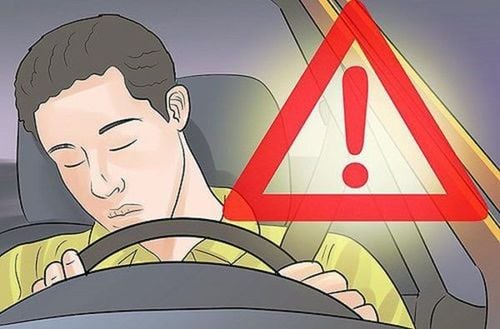
Chóng mặt là một tác dụng người lái xe có thể nhận được khi sử dụng thuốc an thần
2.3. Naps and caffeine
The best countermeasure against drowsy driving is to get enough sleep, lack of sleep must pay off with sleep. The amount of time each person sleeps is different for sleep quality to recover. Therefore, any underlying sleep disturbance should be treated effectively.
If the patient becomes drowsy while driving, you should avoid getting out of the road and get to a safe area as soon as possible. If necessary, going out can take a short nap of about 20 minutes, which can also improve neural performance after sleep deprivation. Longer naps can lead to post-sleep stagnation, which can impair performance in the first 30 minutes of waking.
Cautious use of caffeine can also help. Although caffeine use has not been formally studied in driving conditions, laboratory studies of prolonged sleep deprivation have found that responsiveness, vigilance, and attention are maintained. improved after caffeine intake, especially when combined with napping. A small amount of caffeine taken over a long period of time may be more effective than a larger dose.
Other strategies commonly used to combat drowsiness, such as exposure to cold air, eating, drinking, and turning on the radio have not been shown to help.
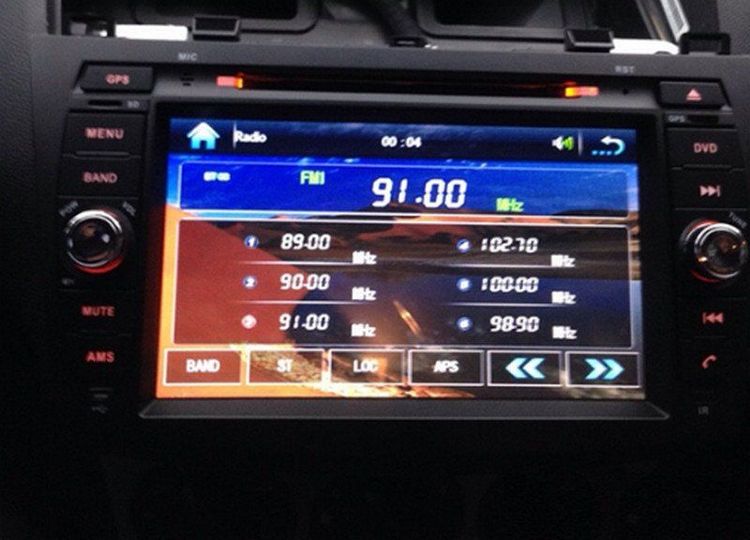
Bật radio trên oto là một biện pháp ngăn chặn cơn buồn ngủ
2.4. Treatment of sleep apnea (OSA)
OSA treatment is an important part of prevention in both commercial and noncommercial drivers. Patients with known OSA who report drowsy driving should be periodically checked for adherence, as nonadherence to continuous positive airway pressure (CPAP) therapy is common and has multiple strategies. strategies to solve problems as well as replace CPAP.
Meta-analyses of observational studies examining accident risk before and after initiating CPAP treatment have found that treatment is associated with a significant reduction in the risk of accidents as well as other adverse events. Traffic problems related to drowsiness and driving simulation methods also prove this. Similar effects have been reported in patients treated with other therapies for OSA, including surgery and orthodontics, although data are more limited.
2.5. The role of drugs to increase alertness
There is insufficient evidence to recommend the use of wakefulness enhancers such as modafinil in patients and there is some concern that they may mask persistent impairment in sleep-deprived patients.
This was suggested by a study of eight healthy men and women who remained awake overnight on two separate occasions. Individuals were given either a 300mg dose of modafinil or a placebo and then underwent a simulated driving test two hours later. Compared with placebo-treated subjects, modafinil-treated individuals had less lane deviation in the driving simulation test, but other assessments did not improve, including lane confusion, reaction time and speed regulation. Even so, subjects rated their performance as improved. Therefore, more research is needed before modafinil can be recommended for drowsy driving under sleep-deprived conditions.
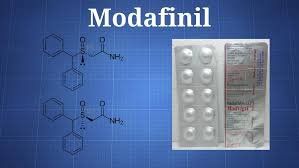
Việc sử dụng chất tăng tỉnh táo modafinil chưa đem lại hiệu quả cho những người ngủ gật khi lái xe
In patients with OSA, the use of stimulants is generally not recommended to reduce driving risks, there is insufficient evidence that the benefits of practicing driving outweigh the potential risks. In addition, there are problems: cost, side effects, less compliance with effective treatment such as positive pressure ventilation, and subjectivity when participating in traffic.
In contrast, patients with severe primary sleep disorders such as narcolepsy are often treated with stimulants to improve daytime alertness. For such patients, the decision to continue driving should be made in consultation with a specialist.
2.6. Warning lane markings
Road strips designed to increase tire noise, have been placed on many roads with the purpose of waking up a sleeping driver or warning a distracted driver. Since drowsy dive crashes tend to deviate from the road or lane, these bands are often placed along the edge of the road or along the center lines. They can also be placed on the lanes when slowing down is required. Warning bands are considered cost effective and are estimated to reduce accidents caused by road deviations by 20 to 50%. Strips down the center and edges of the path are proven to be more effective than using
alone
2.7. Future technological countermeasures
A variety of technological countermeasures have been developed or are under development to recognize and prevent drowsy driving.
Assessing driver fatigue, which is one of the first validated technologies to detect driver drowsiness using the Camera to measure the eyelid-to-pupil closing ratio. The system calculates the ratio of time in one minute in combination with facial muscle movements, yawning movements. Other assessment sensors include: changes in heart rate and respiration using sensors in the seat cushions and seat belts, hand pressure sensors and steering wheel movements. Using artificial intelligence (AI) installed on the vehicle's software can predict when the driver is likely to be drowsy and provide safe responses.

Trí tuệ nhân tạo có thể là một giải pháp được ứng dụng vào việc ngăn chặn các cơn buồn ngủ khi lái xe trong tương lai
Besides that, smartphone-compatible software applications have been developed that use both front and rear cameras to assess lane tracking, braking distance and facial features or eyelid closure to warn drivers when they may be distracted or drowsy.
In addition, road accident prevention technologies and driverless cars are also being studied to prevent and reduce the severity of accidents.
Measures to prevent drowsiness while driving need to be implemented earlier so that drivers can understand and implement to prevent traffic accidents and reduce unwanted risks.
Currently, Vinmec International General Hospital has been and continues to deploy a screening package for sleep apnea syndrome for many customers, including those with symptoms such as snoring, sadness Excessive daytime sleep, fatigue, lack of concentration, sleep disturbances, sleep apnea, ... especially drivers who often sleep at the wrong time.
With a team of qualified, experienced doctors and nurses, who have many years of work in the profession, they will give you the most effective advice and treatment regimen for you.
Customers wishing to be examined at Vinmec International General Hospital can register for an examination at the nationwide Vinmec Hospital and Clinic system HERE.





